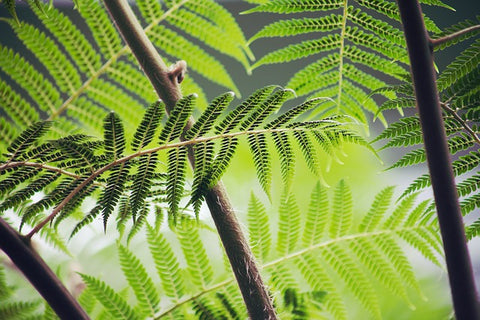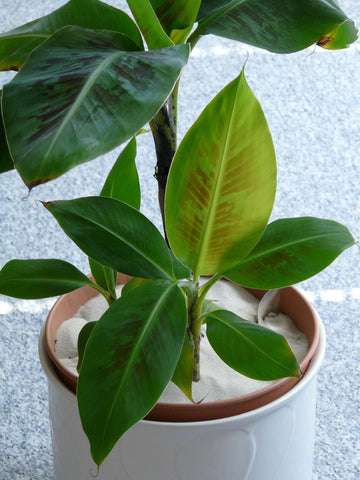5 Plants That Filter Our Air (& Are Safe for Our Fur Babies Too!)

Going green is all about living sustainably—which often includes a close relationship with nature. But what about when you’re indoors? That’s where house plants come in (literally!). In addition to beautifying your home, keeping indoor house plants may also benefit your well-being by helping to keep your indoor air fresh, moist, and clean.
Are house plants safe around pets??
Being pet owners, we have to be really careful when choosing house plants, because many popular varieties—including aloe, jade, and pothos—are actually toxic to our furry friends! Thankfully, there are lots of plant species that are perfectly safe for cats, dogs, and other pets to be around.
If trying to figure out which plants are okay sounds daunting, no worries. We’ve done some of the research for you and discovered some truly lovely pet-friendly options.
A word of caution
It’s critical to always double check the scientific names of indoor plants before purchase to make sure you’re really getting the ones you intended. This way, if your precious fur baby decides to take a nibble (let's face it, it's what they do), you’ll have peace of mind that no harm will come to her.
OUR TOP 5 PLANT PICKS
1. Boston Fern (Nephrolepis Exaltata)

The Boston Fern acts as a natural humidifier and air cleanser, helping to remove formaldehyde, xylene, and toluene (basically fancy words for indoor air pollutants) from the indoor atmosphere. This attractive plant is also said to be great for homes exposed to city smog, making it a perfect addition for folks who are trying to balance a vibrant urban lifestyle with growing environmental awareness.
2. Moth Orchids (Phalaenopsis SPP)

During the daytime, most indoor plants inhale carbon dioxide and release oxygen into our air. When night time rolls around, however, plants typically breathe like us—absorbing oxygen and releasing carbon dioxide. Orchids are a wonderful exception to this rule—at night they continue to take in carbon dioxide and release oxygen, making them an ideal bedroom plant. Place this gorgeous flowering plant on your nightstand to refresh the air while you catch some z's.
3. Areca Palm (Dypsis Lutescens)

According to NASA, when the areca palm reaches 1.8 m (5 ft, 11 in) in height, it can transpire 1 liter of water every 24 hours, making it a very effective, natural humidifier.
4. Banana Plant (Musa Oriana)

This lush, exotic plant removes formaldehyde from the air, can be grown indoors (if you live in a cold climate), and can be moved outside during the warmer months. And it gets even better— there are tons of cool recipes online that use banana leaves to cook with! So, if your banana plant starts growing a little large for your liking, just cut it down to your desired height, and use the leaves for cooking. Win-win!
5. Barberton Daisy (Gerbera Jamesonii)

Daisies look so sweet and pretty it’s hard to resist them. This flowering daisy pot plant comes in a large variety of striking colors, making it a well-loved choice for sunny window sills and decorative centerpieces. Known for its healing properties, it's no coincidence that the barberton daisy is also a popular gift for recovering hospital patients.
What's your favorite house plant?
Have you recently introduced some greenery to your indoor space? We’d love to see it!Make sure to tag #sarifoods on Instagram so we can take a look!
Peace, love, and happy green vibes from the Sari Foods family.



